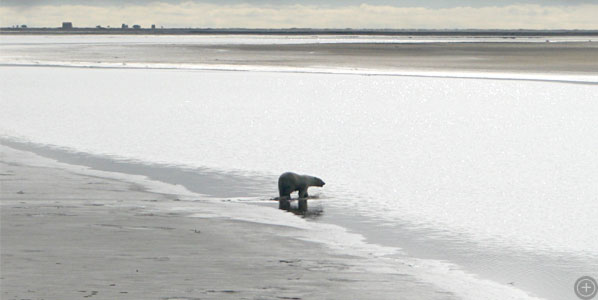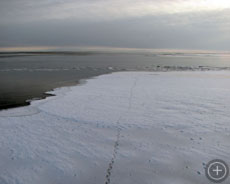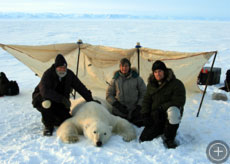
Summer is a critical time for polar bears and climate change is lengthening Arctic summers, which could have a substantial effect on bear populations. However, much of what is known about polar bears comes from studying them out on Arctic sea ice during late winter and spring. During summer, most sea ice retreats far to the north, leaving some bears on shore for several months. Scientists suspect that these bears face difficult conditions on land; temperatures are warm and there’s little to eat. In contrast, some bears follow the retreating ice north, where temperatures are cooler and there may be opportunities to hunt seals.
To find out how polar bears fare in the summer, PhD candidate John Whiteman and his advisors Drs. Henry Harlow and Merav Ben-David are collaborating with scientists from the US Geological Survey and the US Fish and Wildlife Service. They are capturing and examining bears in early summer and attaching GPS-tracking collars, then re-capturing the same bears in late summer and examining them again. Comparing early- and late-summer indicators of body fat, muscle, and diet tells the scientists how well polar bears are faring in summer months. Additionally, they can use this information to forecast how longer Arctic summers may affect polar bear populations.










